What are the top ten famous teas in China? Huangshan Maofeng belongs to what grade of tea grade and history.
In the famous Chinese tea, there are many called Maofeng, such as Emei Maofeng, Mengding Maofeng, Huangguoshu Maofeng and so on. "Mao" refers to the fine white hairs on the leaves, and "peak" refers to tea from high-altitude mountain areas. So some tea shops also call Huangshan Maofeng tea.
Maofeng in Huangshan is the most famous one. It belongs to unfermented green tea and originated in Huangshan, Anhui Province. Its leaves are jade green and curly, like the tongue of a bird. Next to the bud, there is a small yellow leaf that is too late to bloom, called "gold". A delicate plant smells like an orchid from its dry leaves.
Producing area information
Many famous teas are produced in Anhui, such as Keemun Black Tea, Taiping Houkui Tea, volcanic Huangya, Lu'an melon slices and so on. As the most famous geographical indication in Anhui, the natural environment of Huangshan is undoubtedly the best. About 1800 meters above sea level, "Qisong, Qishi, sea of clouds, hot springs" is the characteristic landscape here.
The mountains here are as high as the moon and foggy; if you climb to the top of the mountain, you may feel as if you are standing in the clouds. Such a steep mountain could not stop the growth of plants, and the pine trees clung tenaciously to the rocks, like mythical immortals.
Of course, Maofeng in Huangshan is not planted in such a high place; harvest will be a problem. The tea garden is located on the hillside about 800 meters above sea level, and the climate is more comfortable. Tangkou, Gangcun, Yangcun and Fangcun are the four high-end production plantations of Huangshan Maofeng, known as the "four big families".
The temperature here is still cold, averaging only 15-16 ℃ a year, rainy and humid. There is a local saying: "good tea comes from high mountains and heavy fog." Due to fog, the annual sunshine time is very short, the tea tree will not be hurt by strong sunlight and can better accumulate nutrients; therefore, it can create a great taste.
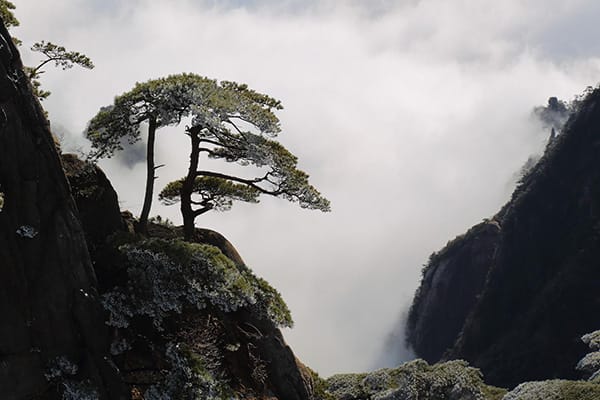
History
Huangshan has a long history of producing tea. Chinese tea culture was the most prosperous in the Tang Dynasty, and the style of tea was lump tea. In the Song Dynasty, local tea masters added rolling steps to the processing of green tea to make the tea look beautiful.
The plantation is shrouded in fog all the year round. So the tea produced here is also called Huangshan Yunwu Tea, which is considered to be the predecessor of Huangshan Maofeng.
According to local records, Huangshan Maofeng was invented by Mr. Xie Zhengan, founder of Xie Yu teahouse in the Qing Dynasty (circa 1875).
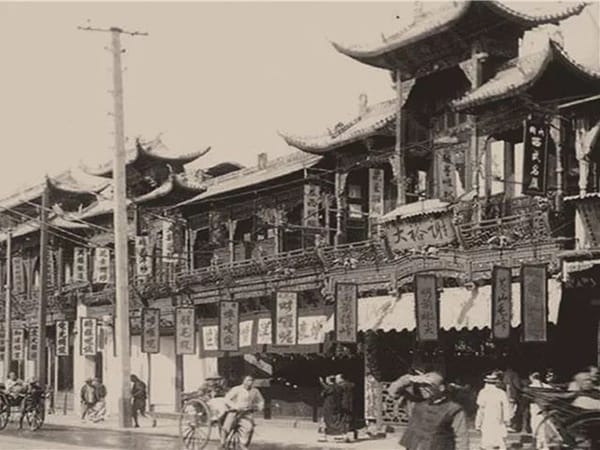
At that time, he wanted to better meet the needs of the market. As a result, he collected raw juice from two major tea gardens in Tangkou and Chong Village, optimized and processed into high-quality green tea, which was named Maofeng.
In the past, Maofeng tea spread to all parts of the world through the Maritime Silk Road and gained a reputation. Unfortunately, Xie Yuda teahouse declined in the 1920s due to poor management. But this did not have any adverse effect on Maofeng tea; it gradually developed into a popular brand and officially changed its name to Huangshan Maofeng. In 1955, Huangshan Maofeng was named one of the top ten famous teas in China.
Tea-making process
The processing of Huangshan Maofeng tea is not as difficult as other teas, but it is also very distinctive. Just like traditional green tea processing, it is mainly through picking, fixing, rolling and drying.
The main harvest time of Maofeng in Huangshan is in April; some early sprouting tea trees can even be picked in mid-late March. The harvest work ended in Lixia (May 5). According to the picking standard, Huangshan Maofeng is divided into the following grades:
A top bud and the first leaf that just bloomed
Level 1-a bud and the second leaf that has just bloomed
Secondary-one bud and to the second leaf
Level 3-one bud, to the third leaf
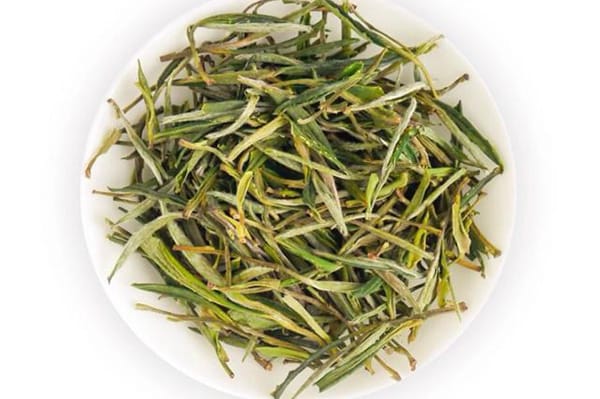
The most prominent feature of high-grade Huangshan Maofeng is that its first leaf has just blossomed and is yellow, which is called "nugget".
With regard to this first leaf, some people think that it is the result of the accumulation of rich nutrients by tea trees in winter. Others think it may be due to dehydration during processing and yellowing. There is no denying that the Huangshan Maofeng of the Gold nuggets was indeed harvested before the Qingming Festival.
Flavor and characteristics
The appearance of the dried leaves of Huangshan Maofeng is not so attractive; they are emerald green and curled into strips. Because of the first leaf that has just bloomed, they inevitably retain some tea stems. If you brew it in a glass, you can see the leaves blossom slowly in the water, accompanied by rising steam, like a beautiful fairy dancing.
Huangshan Maofeng tea is light yellow, clean and bright. The fragrance is not obvious; it is a delicate orchid aroma, elegant and fresh. Due to the baking and drying, there is also some aroma of fried beans mixed in the flowers.
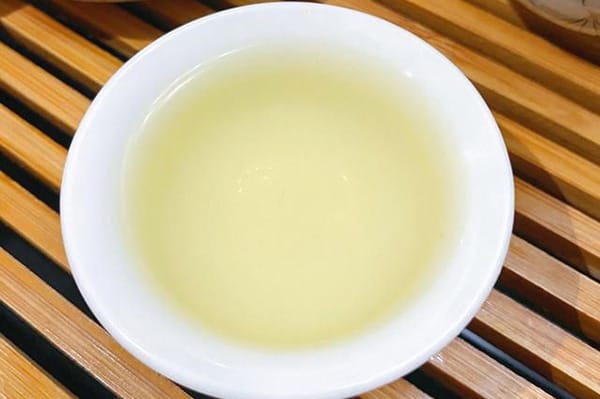
After a sip, the taste is fresh and smooth, and the fragrance of orchid is more obvious. It tastes a little bitter, a little astringent, a little roasted chestnut; about two seconds later, there is a faint sweetness.
Generally speaking, the taste of Huangshan Maofeng tea is very light, so the ancient Chinese described it as a "tea fairy". Huangshan Maofeng tea is a good tea for those who need to meditate or study.
Important Notice :
前街咖啡 FrontStreet Coffee has moved to new addredd:
FrontStreet Coffee Address: 315,Donghua East Road,GuangZhou
Tel:020 38364473
- Prev
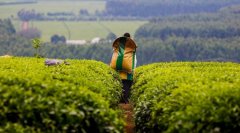
What are the effects and functions of long-term drinking African black tea? taboo characteristics of African black tea brands
Kenya's tea garden tea is grown in many regions and regions of the country. This includes Kericho, Bomet, Nandi, Kiambu, Thika, Maragua, Muranga, Sotik, Kisii, Nyamira, Nyambene, Meru, Nyeri, Kerinyaga, Embu, Kakamega, Nakuru and trannzoia. Most of these places have 80% of the right weather, which makes
- Next
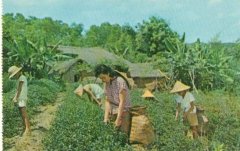
Which brands of Taiwan's four famous teas have the best taste? Taiwan's best black tea ranking.
In addition to being a well-known producing area of oolong tea, Taiwan is also a leader in the field of black tea. since the Japanese occupation (1923 AD), the Ministry of Agriculture of the Government House of Taiwan has introduced fine tea seeds from Assam Province of India to Taiwan for planting. There is a place in a basin with varied and fertile soil at an altitude of 600 to 800 meters above sea level, with a superior climate, warm and humid, deep soil, abundant rainfall and often clouds.
Related
- Beginners will see the "Coffee pull flower" guide!
- What is the difference between ice blog purified milk and ordinary milk coffee?
- Why is the Philippines the largest producer of crops in Liberia?
- For coffee extraction, should the fine powder be retained?
- How does extracted espresso fill pressed powder? How much strength does it take to press the powder?
- How to make jasmine cold extract coffee? Is the jasmine + latte good?
- Will this little toy really make the coffee taste better? How does Lily Drip affect coffee extraction?
- Will the action of slapping the filter cup also affect coffee extraction?
- What's the difference between powder-to-water ratio and powder-to-liquid ratio?
- What is the Ethiopian local species? What does it have to do with Heirloom native species?

